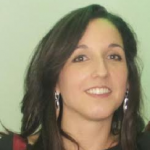- This topic has 4 replies, 2 voices, and was last updated 8 years, 5 months ago by
Damian Marek.
-
AuthorPosts
-
-
October 23, 2015 at 6:39 am #27011
 Nathalie CarrierParticipant
Nathalie CarrierParticipantHello,
I would like to design a thin Ag-film (width around 40nm) perforated by circular holes (Array of lattice parameters : u1=(1;0;0) & u2=(0.5;0.5;0)) to simulate Extraodinary Optical Transmission.
To proceed, I create a PBG Crystal structure, I define the lattice parameters (OK) and I create 2 objects in the Unit Cell :
– a True 3D Block, corresponds to the AG film
– a True 3D Cylinder, corresponds to the Air holesMy question is : how does the software defines priorities ? I mean, there is a cylindrical volume in wich the two objects/materials are defined (Ag and Air). Which of them the calculation takes into account ?
-
November 6, 2015 at 9:06 am #27482
Damian Marek
ParticipantGenerally whichever object is created last will take priority and its refractive index will be used in the case of an overlap.
In your case if I understand correctly, I would actually only create air holes for the PBG crystal and use a large slab of material as the AG film covering the entire crystal structure.
As an aside, if you ever are not completely sure which refractive index the simulator will use (as in the case of an overlap) use the 2D and 3D Refractive index viewers, which you can find at the bottom of the Layout window. It will allow you to look at 2D slices of the simulation domain and view the refractive index.
Regards
-
November 8, 2015 at 8:34 am #27540
 Nathalie CarrierParticipant
Nathalie CarrierParticipantDamian, thank you for the reply, it helped me a lot ! You are right for the structure and I finaly did not use the PBG structure at all. Can I ask for 3 more questions about structure design ?
I want to simulate surface plasmons in a thin Ag layer (~40 nm thick) deposited on glass. The layer is perforated with a 2D array of circular air holes (close packed lattice, with lattice parameter 0.562nm). Light is propagating through the glass, the perforated Ag layer and then the air medium.
– I chose the simulation domain to be glass (n=1.5).
– I adjusted the simulation domain dimensions in order that it matches with the unit cell of my structure and used periodic boundaries conditions.
– I created a linear waveguide of silver (40 nm thick).
– I created cylinders made of air, their centers are separated by the pitch (562 nm).
– I created a linear waveguide of air.I put in attached the final design, could you take a look at it ? I have two issues about it.
First, I wonder what would be the difference between a 3D block of Ag and the linear waveguide profile used ?
Then, some cylinders are not entirely in the simulation domain in order to define the unit cell, is that a problem ?
Finaly, I wish to study the structure not only at normal incidence but with an angle, how is that possible ? By tilting the imput plane or the structure (then I will have issues with the periodic conditions to define the 2D array…)It would really help me if you had some piece of advice,
Thank you a lot !
NathalieAttachments:
-
November 8, 2015 at 8:48 am #27542
 Nathalie CarrierParticipant
Nathalie CarrierParticipantAbout how to tilt the input plane I found the answer on the forum !
\Nathalie -
November 9, 2015 at 9:11 am #27579
Damian Marek
Participant1) To the simulator a 3D block of Ag or linear wave-guide profile does not make a difference if they are the same actual shape. The waveguide object just makes it a bit easier to draw waveguides with a profile whereas the 3D block is a characterized by different parameters.
2) It is not a problem! The simulator will simply ignore anything outside the simulation domain.
3) Yes, using a tilted angle with periodic boundary conditions will not give the results you are expecting. You would have to create a design of the entire lattice and simulate a tilt angle with the expanded domain.
Regards
-
-
AuthorPosts
- You must be logged in to reply to this topic.

